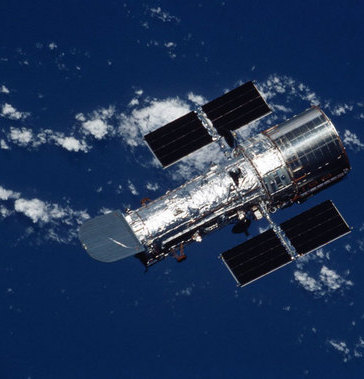Hubble Telescope at 25: The Trials and Triumphs of a Space Icon
Hubble, the first telescope to revolutionize modern astronomy and change our view of the universe by offering glimpses of distant galaxies, marks its 25th year in space this week. Launched on April 24, 1990 aboard the Space Shuttle Discovery, Hubble orbits the Earth. It doesn’t travel to faraway stars but instead snaps incredible pictures of them. The telescope is the fruit of a collaboration between NASA and the European Space Agency.
Hubble absolutely has changed the way humans look at the universe and our place in it. It shows us that the universe has been changing over time, that stars in fact are an integral part of producing the type of element that we need for life, for planets, for our well-being.
Astronomer Jennifer Wiseman from NASA’s Goddard Space Flight Center
Hubble is celebrated as a triumph these days, but almost as soon as it was launched, a major problem was discovered with its main mirror and it did not become operational until three years later. Its repair required a special space shuttle mission in 1993. After that, the Hubble space telescope became a veritable legend in its own right, exploring the depths of space from its circular path around Earth and transmitting astonishing images of supernovas, or massive explosions that occur with the death of a star, and other celestial bodies. One of Hubble’s best known images is of the vast Carina Nebula, an interstellar cloud of dust, hydrogen gas, helium gas and plasma that lies some 6,500 light years away from Earth.
(The spectacular images that Hubble has sent back) are the most flamboyantly beautiful artworks of our time.
British art critic Jonathan Jones

Technology Hubble